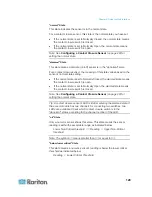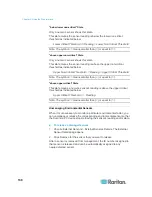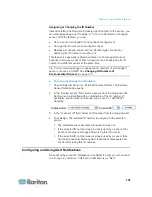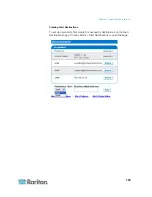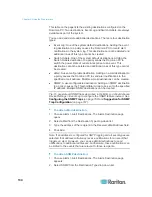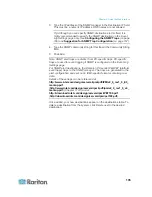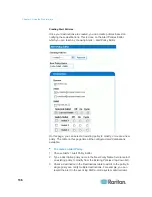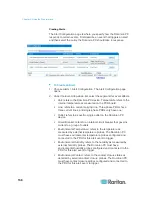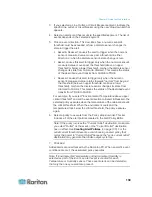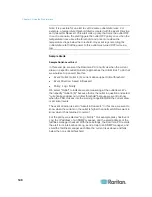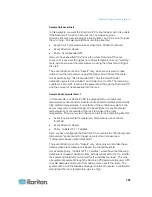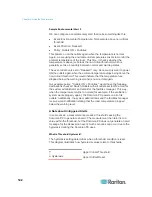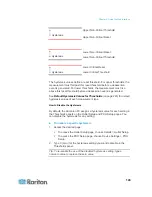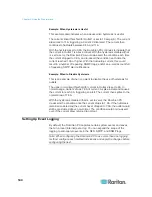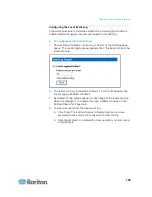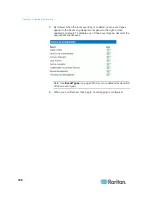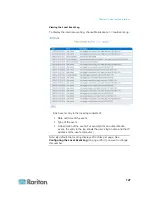
Chapter 5: Using the Web Interface
132
Components of an Alert
The alert is a condition statement: if "A" happens, then do "B". This
condition statement describes what the Dominion PX does in certain
situations and is composed of multiple parts:
Event: This is the "A" portion of an alert and describes the Dominion
PX (or part of it) meeting a certain condition. For example, a specific
outlet's voltage exceeds the non-critical threshold.
Policy: This is the "B" portion of an alert and describes the response to
the event. For example, the Dominion PX notifies the system
administrator of the event and records the event in the log.
Threshold or alarm: This is a condition met by the event. For example,
a temperature warning level or a contact closure alarm.
Destination: This is a target of the policy. For example, a system
administrator's e-mail address.
Thresholds are user-configurable and are adjusted on the appropriate
setup page for the desired part of the Dominion PX:
Outlet-specific thresholds are assigned on the Outlet Setup page.
Unit-wide thresholds are assigned on the PDU Setup page.
Environmental thresholds are assigned on the External Sensor Setup
page.
Destinations are configured as part of the Alert creation process. E-mail
alert destinations require that the Dominion PX be set up for SMTP
communication. See
Configuring the SMTP Settings
(on page 63).
How to Configure an Alert
The best way to create a new set of alerts, in sequence, is:
Create the necessary destinations.
Create policies based on notifying these destinations.
Create an alert that executes a policy.
By working in this order, you have destinations to choose from when
creating a policy, and policies to choose from when creating an alert. If you
try to create an alert and find you do not have a desired policy or
destination available, you will have to interrupt the process to add the
policy or destination, and then must create the alert again.












